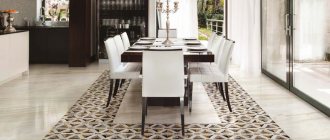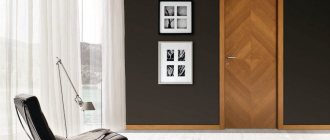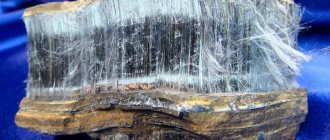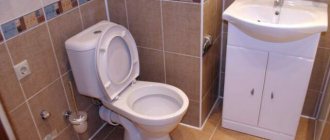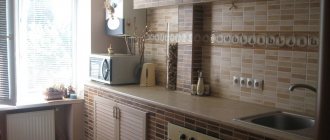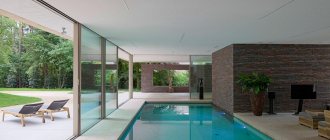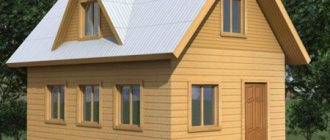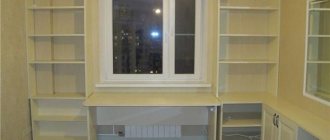At the stage of preparation for installation work, it is very important to make the right choice of material from the expanded range of products, as well as select all the necessary tools that will allow you to quickly and professionally carry out landscaping of the site. Paving slabs in the courtyard of a house 75 photo ideas:
Types of paving slabs
The most current options are:
- Plastic. In its manufacture, a sand mixture and polymer compounds are used. These polymer sand products have good strength properties and anti-slip properties.
- Based on natural stone. It is performed by crushing various rocks, such as quartzite, granite, slate, shungite and others. The most expensive solution is marble-based tile finishing.
- Rubber. Contains rubber crumb, has high moisture, frost-resistant properties and noise-absorbing qualities.
- Clinker room. For production, special clay is used, fired at high temperatures. Clinker paving slabs have natural shades, are fire resistant and non-slip.
- Concrete. Reinforced concrete tile finishing is made by vibration pressing and vibration casting. These cement products are highly durable and are ideal for decorating surfaces subject to intense pedestrian traffic or vehicle traffic.
When choosing the type of product, you should take into account the abrasion rate, maximum temperature differences, expected load, and budget.
Production methods
The main elements from which paving slabs are made are sand and cement. The following can also be added to the solution:
- granite chips;
- marble chips;
- pigment.
The quality and technical characteristics of the material depend not so much on the composition and proportions of its components, but on the production technology.
Vibration pressing
The mold for making tiles is located on a vibrating bed. Due to vibrations, the dry mixture in the mold is compacted. To speed up the process and improve quality, force is applied to the mass. This is done using a vibrating punch until the required density is achieved. After the process is completed, the punch and mold are removed, and the finished product remains on the bed. The products obtained in this way are of high quality and have a service life of about 25 years.
Hyperpressing
This method is used for accelerated production. With this manufacturing method, the vibration process is replaced by a high-pressure pressing process. The resulting mixture is homogeneous. This production method is considered one of the most expensive, as it requires special high-quality equipment.
Vibrocasting
The cheapest way to make paving. Forms are placed on a vibrating table into which the liquid solution is poured. A vibrating tabletop is needed in order to partially separate the solution into fractions. Cement laitance forms on the surface, after which the workpieces are removed from the table, covered with a special film and placed in a separate room to dry. Drying lasts about a day, but for the material to acquire the required level of strength, it must lie in the warehouse for about a month. Look at examples of photos of paving slabs in the yard.
Advantages and disadvantages
This paving finish has several advantages and disadvantages.
| pros | Minuses |
| It has a huge range of shapes, colors and textures. | High price. |
| Prevents the appearance of puddles, as excess moisture drains through the seams. | It can be quite slippery and dangerous in cold weather. |
| It is quite wear-resistant, resistant to ultraviolet radiation, precipitation and temperature changes. | |
| It has a long service life of 15 to 20 years. | If installed incorrectly, the quality of the material decreases significantly and grass begins to grow between the seams. |
| Features easy installation. If one module is damaged, it can be easily replaced. |
Requirements
Taking into account the functions performed, the covering of the blind area must meet the following requirements:
- Waterproof and moisture resistant. The coating must provide the necessary tightness.
- Sufficient mechanical strength, ensuring the ability to walk on the blind area and resistance to unexpected falls of various objects (for example, icicles).
- Resistance to temperature changes, sufficient frost resistance and resistance to solar ultraviolet radiation.
- Attractive appearance, in harmony with the interior of the facade.
The current SNiP imposes requirements on the design of the blind area itself . It should not have a flat surface and be adjacent to the foundation wall.
At the same time, a compensation gap must be provided to level out thermal expansion and the influence of soil swelling.
The blind area must have a slope to allow moisture to drain. It is laid in a continuous strip around the entire structure, with the exception of the porch.
In addition, the blind area must be wide enough for passage and installation of stairs. No heat should be lost through this element, which means that the problem of its insulation needs to be solved.
Recommendations for selection
Basic tips:
- When selecting products, it is important to pay attention to their color; it should be uniform and not have white or dark stripes.
- You should not give preference to materials that are too bright and have a large number of pigments, as they are less durable.
- When choosing the color of paving slabs, take into account the decorative features and illumination of the area. Coverings that match the tone of architectural details or match the color of the house will look more harmonious.
- In order to protect the tile covering from damage, it is recommended to use a border frame.
A natural stone
Paths were paved with natural stone in the gardens of famous Roman patricians
gravel path
Garden paths from natural stone have been made since BC. This is due, first of all, to the fact that previously they did not know how to make tiles from plastic and similar cheap materials. This is also due to the list of advantages that the stone has:
- real stone is a beautiful material that looks good next to any home, both in a classic and modern style;
- The stone is not sensitive to anything - it does not suffer from temperature changes, does not fade in the sun, is not harmed by water and is not even afraid of mechanical damage.
However, there are also disadvantages:
- price - if you do not use available material, the stone will be expensive;
- specific appearance - yes, the stone is beautiful, but its beauty is discreet and not pleasing with variety, therefore it is not appropriate everywhere;
- heaviness - you need to be able to deliver materials for the path, and then make a foundation for them so that they do not go into the ground.
Stone paths can last for many decades. The most that may be needed is to renew the path itself from time to time so that the stone does not become overgrown with moss and does not sink into the ground.
Gravel path with curb
Gravel path near the fountain
Tile shapes
The tile material can have a variety of bar shapes.
Clover
It can be embossed and take the form of squares, with corners cut into a circle, or smooth tiles with a complex structure and variety of shapes.
Coil
Due to its original shape, it is possible to achieve locking connections that provide strong adhesion of the modules to each other.
Rhombus
Allows you to decorate the surface with an original three-dimensional pattern in the form of a multi-pointed star or cube, which perfectly complements the surrounding exterior.
The photo shows a path with two-color paving tiles in the shape of a diamond.
Brick
Using brick imitation, you can get a smooth and regular plane, distinguished by a neat appearance.
Wave (zigzag or snake)
It consists of elongated elements with curves reminiscent of a wave or lightning, which can enliven the surrounding space and make it much more interesting.
Square
It is the most traditional option for paving slabs. Square models, despite their simplicity, give the surface a special elegance.
Angle
It has a unique appearance and quite interesting performance.
Mosaic
Due to its small size, using mosaics you can create a wide variety of artistic designs when paving paths.
Hexagon (honeycomb)
This form always looks very stylish and can have almost any layout option.
The photo shows diamond-shaped paving slabs on the exterior.
Octahedron
It is distinguished by a slightly strict, but at the same time refined pattern, reminiscent of oriental linen. Products in the form of an octagon can be combined with square-shaped elements or a hexagon in combination with a square.
Round
Thanks to the rounded edges, it looks very aesthetically pleasing and original. Round tile cladding is especially harmonious with garden lawns.
Chamomile
It has a beautiful, whimsical configuration, which allows you to realize various creative ideas and achieve unique compositions.
Scales
It creates an unobtrusive, but at the same time effective design, and due to various color solutions, it provides the opportunity to lay out original patterns.
The photo shows a landscape of a private house with a path decorated with gray scale-shaped paving slabs.
Maple
It has smooth lines that immaculately follow the contours of a maple leaf. By using the effect of combining shades, you can achieve a very attractive decor that will be associated with autumn leaf fall.
Lizard
It has a unique appearance and a fairly complex shape that allows you to lay tile modules with virtually no gaps.
Trapezoid
Provides the opportunity to create truly interesting combinations. Trapezoidal elements can be arranged in the form of parallel lines, triangles or hexagons. When using modules of different colors, it is possible to achieve an unlimited number of patterns.
Dimensions
To perform the assigned functions, it is important to choose the correct dimensions of the blind area. Typically, the strip width is selected in the range of 0.8-1.2 m .
The reference point can be the overhang of the eaves of the roof. The blind area should extend beyond the edge of the cornice projection by 25-30 cm, which will allow water flowing from it to be drained.
The thickness of the blind area pie is formed from several parameters:
- base (compacted soil) – 10 cm;
- sand or sand-crushed stone cushion - 10-20 cm;
- layer of geotextile;
- sand, sand-crushed stone or sand-cement cushion for the blind area - 10 cm;
- blind area – 10-15 cm.
Another important geometric parameter is slope . To effectively drain water, it must be increased, but for ease of movement a flat surface is more suitable.
As a result, an alternative approach is chosen - a slope within 2-10° from the foundation wall. Most often, it is 4-5°, i.e. the edge near the wall rises by 3-4 cm.
Varieties of tile textures
There are also several texture options.
Tuchka
The surface of this product is distinguished by a sinuous pattern and an unusual three-dimensional texture, which gives the cladding a roughness and matte effect.
Net
It has a clear ribbed structure that provides anti-slip properties. Mesh tiles are often used in the design of sidewalks, steps, swimming pools, decorative ponds or fountains.
Planks
Thanks to the natural wood texture, such a finish will make the exterior particularly environmentally friendly and is perfect for decorating paths, steps or flower beds.
Under the tree
This paving slab, imitating the texture of natural material, thanks to special molding and coloring techniques, accurately replicates the cut of a tree with all its irregularities and grooves.
Under the stone
Elite marble cladding adds special charm and sophistication to the design; models with imitation sea pebbles look no less original, have regular geometric shapes and a non-slip rough surface.
Checkers
It will undoubtedly decorate and enliven the surrounding exterior. This paving stone can also have a multi-colored paving option.
Carpet
It is an incredibly elegant and at the same time durable coating that provides comfortable use, stable movement and a non-slip surface.
Installation nuances
Perhaps for some, the process of laying tiles will seem easy and quick, but this is far from what it seems. Everything is much more complicated, since there are very important points in the installation process. So, let's look at them:
- It is recommended to lay the tiles diagonally. In the process of parallel laying of tiles, a large percentage of waste appears, which greatly affects the financial component.
- To give the tiles a certain shape or borders, they need to be trimmed; for these purposes it is recommended to use a special gas cutter, but you can use a regular grinder with a special disc.
Paving slab colors
With the help of the correctly chosen shade of the product, it is possible to achieve not only the transformation of paths and landscapes, but also to advantageously emphasize the design of buildings on the site. Colored paving slabs can be made in gray, black, yellow, red, white, beige, green, brown, or have a two-color or three-color design.
White coatings look very impressive and, due to their brightness, are clearly visible in the dark. Quite often, materials of a pleasant dark orange, brown, brick or cherry shade are chosen for finishing, which are the most practical to use.
The photo shows a path leading to a private house with brown paving slabs.
A universal solution is cladding in a gray shade, which adds sophistication to the design, harmonizes with a wide variety of colors and favorably emphasizes the architectural merits.
The photo shows black rectangular paving tiles used to design a path near the house.
DIY making
You can also make paving slabs yourself to reduce construction costs . The simplest, casting method is carried out as follows.
Molds are made (wooden or metal) that exactly follow the shape of the tile. A solution is poured into them, pre-mixed thoroughly, with a fairly thick consistency. Drying is ensured within 60-70 hours.
Then, the mold with the contents is immersed in heated water for about 30-40 s, which makes it possible to easily remove the workpiece. The tile is placed on a flat, horizontal surface and aged for 23-25 days.
Recommended solution composition:
- cement grade not lower than M400 (20%);
- sifted river sand (55%);
- crushed stone fraction 6-10 mm (22%);
- fiber fiber (4% by weight);
- plasticizer (0.5% by weight);
- dye for concrete (up to 7%).
The water is cleared of all impurities and amounts to 6-7%. For 1 m3 of mixture, 135 liters of water are recommended.
The highest quality and most durable tiles are obtained using the vibration method. However, this requires special equipment. The molds are installed on a vibrating table, which ensures the necessary compaction of the mixture.
Examples of outdoor tile designs
A rather unusual design move is luminescent, transparent or frosted glass luminous paving slabs, with built-in LEDs, this solution allows you to achieve a truly fabulous and unique atmosphere. Also no less interesting on the exterior is the cladding with decor in the form of small colored inserts.
Gothic tile cladding is distinguished by a special ornament in the form of zigzag lines located between parallel strips and has an individual emphasized style. The “Gzhel” finish allows you to assemble a paving cloth from shaped elements of different sizes and shapes and thereby achieve an extraordinary coating.
Paving stones
Used for a long time for paving streets
Gravel path in a Japanese garden
Coarse gravel path
Paving stones are similar in properties to real stone - its bars cannot be damaged, but they look a little boring. However, if you make an effort and lay them out in mosaics, the result will be quite nice. Bricks can be used instead of paving stones.
Path with gravel decor
Gravel garden path
Options for designs and patterns of paving slabs
Paths paved with tiles with various patterns and ornaments will undoubtedly give the surrounding space a special fairy-tale atmosphere.
The photo shows a landscape of the courtyard of a private house with a pattern of paving slabs.
Due to various geometric shapes in the form of large squares, rhombuses, rectangles, in the shape of a circle or semicircle, it is possible to make the sidewalk design dynamic or, conversely, to soften it.
The photo shows a path in front of the house, decorated with paving street tiles in the form of ornaments.
Photo gallery
In our photo gallery you can see 37 more ways to lay paving slabs in the photo.
Layout of paving slabs
There are many styling options with which you can create a harmonious and aesthetic composition.
Schemes for rectangular tiles
Main types:
- In a checkerboard pattern. It involves the use of two elements of different colors, most often black and white. The chessboard layout, despite its simplicity, allows you to achieve very effective surface decoration.
- Herringbone. In this case, the modules are located at an angle of 45° or 90° to each other, creating a fairly dynamic pattern.
- Take a running start. It has a standard design appearance, reminiscent of brickwork.
- Network. It has a weaving shape, formed by arranging rectangular elements perpendicular to each other.
- Zigzag. It is a rather complex pattern that involves laying a zigzag pattern.
- Random order. Does not have a specific location. The chaotic order looks especially advantageous with the use of multi-colored products.
The photo shows multi-colored rectangular paving tiles with a staggered layout.
For figured tiles
These products have a rather complex layout, in which you need to take into account the color scheme and direction of the individual module. Unusually laid out figured elements in the form of stars, leaves, flowers and other figures will add a special zest to the landscape.
Necessary tool
To do the work yourself you will need the following tool:
- shovel and hand tamper for preparing the trench;
- knife and scissors for laying layers;
- a trowel, usually a trowel, for preparing the base for tiles;
- a mallet and rubber hammer for laying tiles, a grinder or a special guillotine for cutting them;
- building level, tape measure, metal ruler, square for measurements and control.
When making the tiles yourself, you will need special equipment, tools and accessories.
Photo of using paving slabs
Popular use cases.
Photo of paths at the dacha
This design will be an excellent replacement for simple concrete paths in the country. Due to the original compositions, variety of shapes and colors of paving finishes, it is possible to complement any landscape. For small garden plots, ornate paths with smooth lines would be an excellent solution, and for large areas, clear straight paths.
The photo shows a path on a summer cottage, decorated with paving slabs of different colors.
Photo in the courtyard of a private house
A path paved with paving slabs helps not only connect different objects with each other, but also highlight certain buildings. This covering can be located around the house, in front of the house, in a gazebo, on an open veranda, or frame flower beds, thereby allowing you to keep the surrounding area clean.
On the site of a private house, with the help of street cladding, it is also planned to design a parking lot for a car. For this purpose, reinforced concrete products are used that can withstand the load from machine movement.
Porch made of paving slabs
The porch can be decorated with single-color or multi-colored tile material of almost any shape, or even a mosaic can be used for decoration, allowing you to create a truly elegant design.
The photo shows a street threshold with sand-colored clinker paving slabs.
The porch, lined with paving slabs, combined with paths and blind areas, looks very impressive.
Stair tread cladding ideas
Stair steps are subject to heavy loads, so they require the most durable, wear-resistant and non-slip finish.
Original ideas for arranging garden paths
The use of non-standard materials is an excellent solution in cases where you want to create an original landscape element at minimal cost. So, you can use bottles, fragments of ceramic tiles, round tree slices, caps from plastic bottles, and this is just a small part of the materials for this creative country idea.
In the latter case, it is necessary to collect a large number of lids and paint them in different colors. This option will allow the homeowner to experiment with colors and patterns that can be made from bright caps.
There are many variations of garden paths that you can place on your site. A wide range of products will allow the average buyer to choose a product based on his preferences and the amount of money he has at his disposal.
Budget track variations are not always inferior in their characteristics to expensive options. We must not forget about one more method - creating a path from improvised means. This method will allow you to originally arrange the site in such a way that staying on it is not only comfortable, but also enjoyable.

